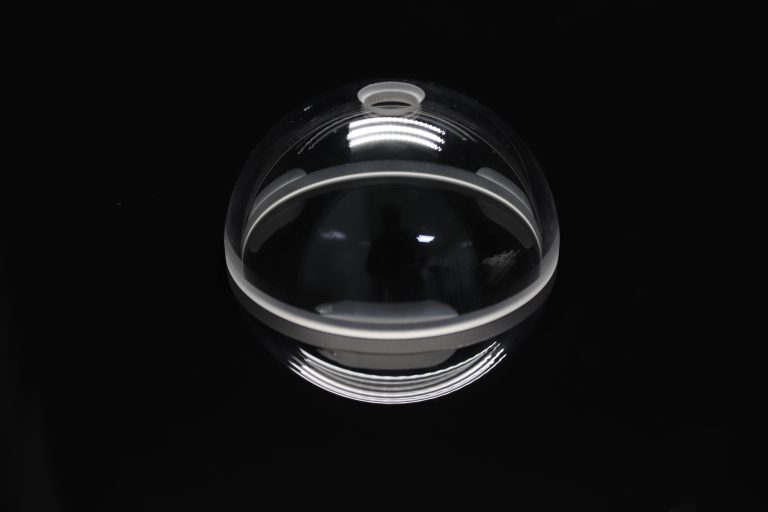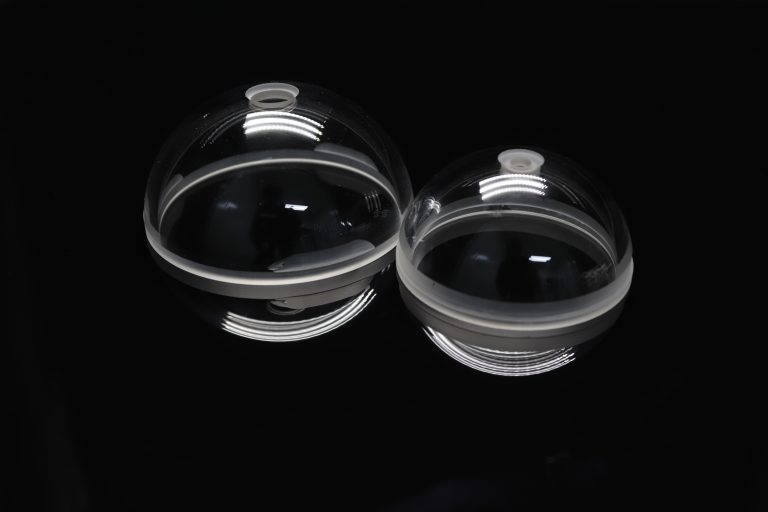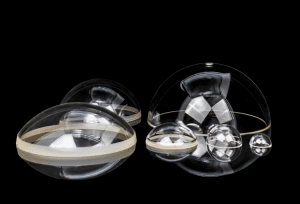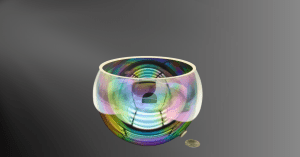Key Takeaways:
- Optical domes in optical systems maintain optimal optical performance even under high pressure.
- They are made from durable materials like sapphire and tempered BK7 glass.
- Key design factors include material selection, dome curvature, coatings, and mounting techniques.
- Avantier’s dual dome solution with titanium clamping ensures resilience to high pressure and temperature variations.
Overview of Optical Domes: Functionality, Materials, and Applications
Optical domes, also known as dome windows, are specialized types of protection windows used in various optical detecting and imaging systems. They consist of two dome-shape surfaces and allow light rays to pass through with minimal effect on the optical performance of the optical instruments. They usually are made from durable materials (such as sapphire, fused silica, and tempered BK7 glass ) to protect /cover the camera, lenses, sensors, etc.
Optical domes typically offer a wider field of view compared to that of flat ports. They are commonly used in various applications such as underwater cameras, aircraft navigation systems, surveillance systems, scientific instruments, etc. They also play a vital role in protecting optical systems while ensuring optimal performance in various applications that require transparent enclosures.
Critical Factors Influencing Optical Dome Design
- Material selection: Optimal performance hinges on the judicious choice of materials with requisite optical properties (e.g., refractive index, dispersion) and mechanical attributes (e.g., strength, durability).
- Curvature: The curvature of the dome profoundly influences optical traits such as field of view and image sharpness. Striking a balance among these aspects necessitates meticulous design that is tailored to specific application needs.
- Coatings: Integration of anti-reflective coatings serves to diminish reflection losses and bolster optical transmission, enhancing overall performance in the process.
- Environmental considerations: Operating within demanding environments, such as underwater or aerospace settings, demands robust design considerations encompassing pressure resistance, temperature stability, and resilience against scratching or abrasion.
- Mounting and sealing: The efficacy of optical systems enclosed within the dome hinges on adept mounting and sealing techniques. These are pivotal in safeguarding system integrity and thwarting contamination or damage.
Project Overview
Instead of using regular protective domes, we have optimized and manufactured a set of three domes for a research and development project. The general design is to have two domes with the same geometrical dimensions and to have themglued and clamped together with a titanium ring. Outside of the dome, there is another bigger dome to cover the smaller dome which is also clamped on the titanium ring.
One critical testing factor is that the designated laboratory environment needs to be under high pressure (over 3 bar) witha 60℃ temperature difference. Because of this, Avantier needs to count the thermal expansion of the glass as a critical decision making factor when choosing materials. Also, for the small clamping areas,mechanical shear force is worthy of consideration.
Another difficulty Avantier faced is that, because the whole assembly needs to remain unbroken under high pressure, the titanium ring applies a strong force, with the dimensional tolerance as tight as ± 50 μm.
Optical Dome Specifications
Dimension | Ø 80mm |
Thickness | 4mm |
Material | chalcogenide glass |
Coating | Anti-reflection Coating (<0.2%) |


Overcoming Challenges
The development and optimization of the specialized optical domes for this R&D project undertaken by Avantier mark a significant advancement in protective dome technology. By integrating innovative design elements with rigorous testing protocols, Avantier has tailored a solution capable of withstanding demanding environmental conditions, including high pressure differentials and temperature extremes.
The utilization of materials with precise thermal expansion characteristics, coupled with meticulous attention to mechanical shear forces and dimensional tolerances, underscores Avantier’s commitment to engineering excellence and reliability. The incorporation of anti-reflection coatings further enhances optical performance, ensuring minimal loss of image clarity and transmission efficiency.
Conclusion
The novel assembly approach, featuring dual domes clamped together with a titanium ring, demonstrates Avantier’s ingenuity in addressing complex engineering challenges while maintaining structural integrity. This innovative design not only enhances the protective capabilities but also offers a platform for future advancements in optical enclosure technology.
Overall, Avantier’s dedication to precision engineering and meticulous attention to detail has culminated in the creation of a robust and high-performance optical solution. As optical systems continue to evolve and face increasingly demanding operational environments, Avantier’s expertise positions them as a leader in providing reliable and cutting-edge solutions for a wide range of applications.
GREAT ARTICLE!
Share this article to gain insights from your connections!







